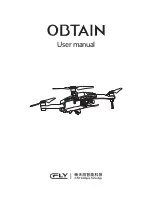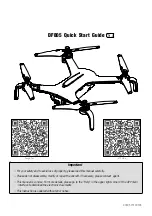
24
3.7 Nose-In H Pattern
Condition(s):
1.
Precision RDASS at 10m minimum flight altitude
2.
Sufficient clearance to perform maneuver
Standard(s):
1.
Maintain consistent speed throughout the maneuver.
2.
Maintain desired ground track ± 3 meters
Crew Actions:
Operator Controlling the Aircraft (OCA):
1.
Announce to the Visual Observer direction of flight
relative to the aircraft orientation. e.g. “Aircraft
Forward”, “Aircraft Aft”, “Aircraft Slide Left”, Aircraft
Slide Right”
Visual Observer (VO):
1.
Assist the OCA in obstacle avoidance
Procedure:
For training the nose-in H Pattern shall be accomplished using
both the flight tablet and the remote control. The OCA will yaw
the aircraft 180 degrees in either direction to orient the aircraft
nose-in. Beginning at position ❶, apply an aft input on the
cyclic to achieve 1 - 2 m/s rearward flight. Smoothly return the
cyclic to the neutral position to stop at position ❷. Apply a
forward input on the cyclic to achieve 1 - 2 m/s forward flight.
Smoothly stop at position❸. Apply pressure to the left on the
cyclic to achieve 1 - 2 m/s sideward flight to the aircraft’s left.
Smoothly stop at position❹. Apply an aft input on the cyclic to
achieve 1 - 2 m/s rearward flight. Smoothly stop at position ❺.
Apply a forward input on the cyclic to achieve 1 - 2 m/s forward
flight. Smoothly return the cyclic to the spring-loaded neutral
position to terminate at position ❻.
Summary of Contents for Precision RDASS
Page 1: ...Part 27670001 Revision 02 26 2016 Precision RDASS Flight Training Guide...
Page 13: ...10 Figure 1 Indoor H Pattern...
Page 25: ...22 Figure 2 Outdoor H Pattern...
Page 34: ...31...
Page 35: ......










































